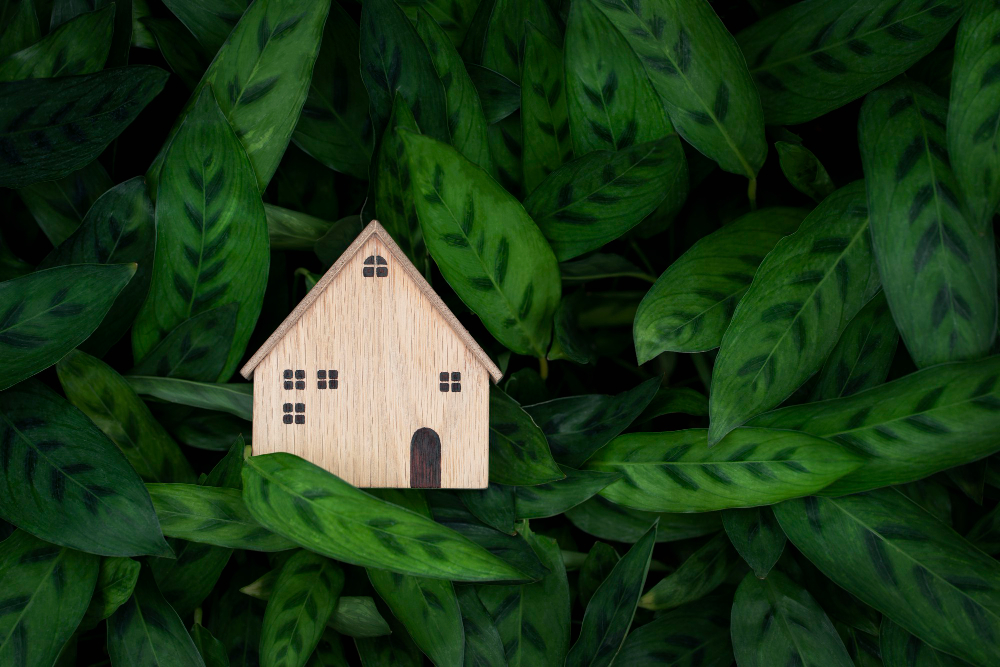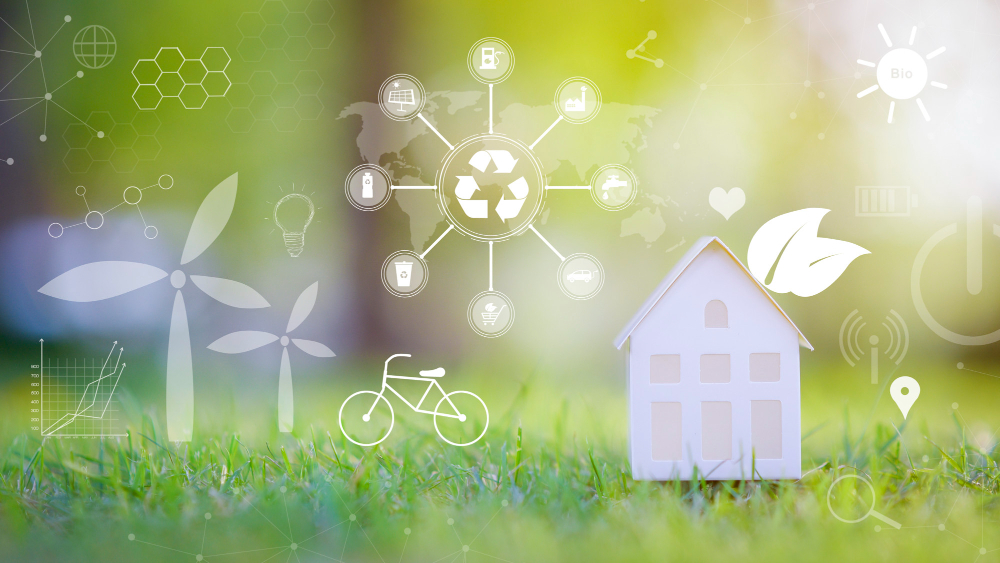Sustainable Home Design: Creating an Eco-Friendly and Energy-Efficient Living Space

Sustainable home design is an important part of creating a healthy, comfortable living space. It’s also one of the best ways to protect our environment and save money on your utility bills.
Sustainable design involves using materials that are durable and recyclable, as well as installing features that will help you reduce the energy usage involved either way. It incorporates energy-efficient appliances and systems, green building materials, and sustainable landscaping strategies to create a healthy living space that benefits both your wallet and the environment.
In this post, we’ll explore how you can incorporate eco-friendly elements into your current home or renovate it with sustainability in mind.
Principles of Sustainable Home Design
Passive solar design
This is the practice of orienting a building to take advantage of natural heat sources, such as sunlight and wind, to reduce energy use.
Energy-efficient materials and technologies
Energy-efficient materials include high-quality insulation and windows that block heat transfer while allowing light in; they also include appliances with low power consumption and water fixtures that conserve water.
Water conservation
The goal here is to use less water by installing low-flow shower heads, washing machines with larger capacity filters (to prevent clogs), etc. You can also consider rainwater harvesting systems if you live in an area where it rains frequently enough. These systems collect rainwater from your roof for use on plants or lawns instead of letting it run into sewers where it contributes to sewer overflows during heavy rainfall events (which are becoming more frequent due to climate change).
Key Elements of Eco-Friendly Home Design
Eco-friendly home design should be considered from the beginning of your project. It’s important to understand how you can use sustainable materials and methods to make your home more environmentally friendly.
Green building materials
Using sustainable materials is important because it helps reduce your carbon footprint and makes sure that you’re not contributing to environmental pollution.
When choosing building materials, look for those made from renewable resources such as bamboo, cork, and hemp. Reclaimed wood is also a great option since it’s been used before–it just needs to be re-purposed.
Recycled materials such as plastics can be melted down into new products that have similar characteristics as the original material (like plastic bottles). This reduces waste by keeping items out of landfills while still providing homes with quality building materials.
Energy-efficient appliances and systems
Investing in energy-efficient appliances is one of the most important things you can do to make your home more sustainable. Look for the Energy Star label on refrigerators, dishwashers, washing machines, and dryers. In addition to saving you money on your utility bills, these appliances will help reduce greenhouse gas emissions by reducing how much energy we use–and therefore how much pollution gets released into our atmosphere.
Energy-efficient heating and cooling systems are also important for sustainability because they require less fuel consumption than conventional ones, resulting in lower emissions levels that contribute to climate change. If possible for your budget and lifestyle considerations (elevated monthly utility costs), consider installing solar panels or geothermal heating systems at home; both of these options require no electricity from power plants since they harness heat from the sun or ground instead of burning fossil fuels like coal or natural gas.
Sustainable landscaping
Sustainable landscaping is a great way to make energy-efficient houses. Native plants and drought-tolerant species are ideal for sustainable landscaping because they don’t require much water, fertilizer, or pesticides. Permeable paving materials like brick and stone allow rainwater to soak into the ground rather than running off into storm drains where it can cause flooding or pollution of waterways. Rainwater harvesting systems capture runoff from roofs and other parts of your property that would otherwise be wasted, while greywater systems recycle wastewater from sinks and showers for use in gardens or flushing toilets.
Strategies for Creating an Energy-Efficient Living Space
There are a number of strategies for creating an energy-efficient home design and living space.
Insulation and air sealing
In order to create an eco-friendly and energy-efficient living space, you’ll want to insulate your home. There are several types of insulation materials available, including fiberglass batts and rigid foam boards. Both perform well at preventing heat loss through the walls of your home–but each has its own pros and cons.
Window design and placement
One of the most important aspects of your home’s energy efficiency is the design and placement of windows. Windows provide natural light, ventilation, and heat, but they can also be a significant source of heat loss and gain.
Selecting the right window materials is crucial to improving the energy efficiency of your home. Here are some options to consider:
- Double or triple-glazed windows: These windows have multiple layers of glass with insulating gas (usually argon) between the panes. They are much more effective at reducing heat transfer than single-pane windows.
- Low-E glass: Low-emissivity (Low-E) glass has a special coating that reflects heat while allowing light to pass through. This type of glass can significantly reduce heat gain in the summer and heat loss in the winter.
- Insulated frames: Choose window frames made from insulating materials like wood, vinyl, or fiberglass instead of metal, which can conduct heat.

Lighting design
When you’re designing your home, keep in mind that the lighting you choose can have a big impact on your energy bills. There are many ways to reduce your lighting costs by using light bulbs that use less electricity and installing motion sensors for energy-efficient lighting that turn off when no one is in the room. You may also want to consider using natural light whenever possible by orienting windows toward the south side of your home or building an atrium with skylights above it.
If you’re planning on using incandescent bulbs (the most common type), look into compact fluorescent lamps (CFLs) or light-emitting diode (LED) bulbs instead; these options will use about 75% less energy consumption than incandescent bulbs while providing similar brightness and color temperature during operation. However, since CFLs contain mercury vapor which could become an environmental hazard if disposed of improperly or broken into pieces inside landfills, we recommend choosing LED lighting whenever possible because they don’t contain any hazardous materials at all.
Renewable energy sources
Renewable energy sources are a great way to reduce your carbon footprint, save energy, and help the environment. Solar power panels, solar water heaters, and small-scale wind turbines are all sustainable options that can be used to generate electricity, reduce energy costs, and cool your home.
Incorporating Sustainable Design into Home Renovations
When it comes to home renovations and remodeling, there are several ways you can incorporate sustainable design into your project. Another important step is assessing your current energy efficiency and environmental impact. This will help determine which upgrades will have the biggest impact on reducing your carbon footprint. For example, upgrading from incandescent light bulbs to LED lights will reduce greenhouse gas emissions by nearly 90%.
Prioritizing Sustainable Upgrades
Once you’ve assessed what upgrades are needed based on current levels of energy efficiency and environmental impact, prioritize them accordingly so that they’re implemented in priority order during the renovation process. Some examples include installing solar panels or converting heating systems from natural gas to geothermal technology. Working with green architects and contractors who specialize in these types of projects can help ensure that everything goes smoothly while still achieving maximum results.

The future of the planet is in your hands. As a homeowner, you have the power to make a difference by adopting sustainable home design practices that will improve your own living space and reduce your carbon footprint. By making small changes in how you live and what materials are used in construction, you can have an enormous impact on global warming and other environmental issues.
The design of sustainable homes is a complex topic and requires careful consideration. However, the benefits of creating an eco-friendly and energy-efficient living space are many. The information in this article should help you get started on your own sustainable home renovation project by providing some basic principles, key elements, and strategies.




